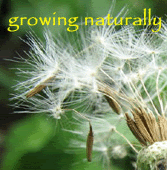Meditation, Inner Work and the Temperaments
By Kristie Karima Burns, MH, ND
http://www.thewaldorfchannel.com/
http://www.naturopathichealingcourse.com/
One thing that Steiner saw as very important for Waldorf parents and educators was to maintain a constant awareness of ourselves through meditation and self-reflection. The beginning of his work, “The Foundation Meditation” expresses his thought the best when he says,
Soul of man!
You live in the limbs
That carry you through the world of space
Into the sea of spirit-being:
Practice spirit remembrance
In the depths of soul,
Where in the reigning
Cosmic creator-being
Your own I
In God's I
Is begotten;
And you will truly live
In the cosmic human being.
Phlegmatics are natural meditators. Remember Winnie the Pooh from the 100-acre-woods? He always seemed to be in a constant state of meditation – always looking at the clouds and seeing Hephalumps in them or something! People of the phlegmatic type don’t usually need instruction in meditating or finding time to meditate. For a phlegmatic, meditation happens when it will, throughout the day, alone or in a crowd, in the form of daydreams, short naps, sleeping in and sitting peacefully. While others may find this behavior irritating – phlegmatics are often told to “get up and do something useful” we could all learn a bit about meditating from their natural state of being. The phlegmatic’s challenge in meditation is to focus on themselves instead of distractions. If one is trying to center themselves they need to spend some time meditating on their own inner being and life. A phlegmatic can easily get distracted by thoughts of “Hephalumps and honeypots.”
Melancholics love order and are easily distracted and disturbed when things are out of order. So for a melancholic to be able to meditate they need to find a time of day and a space in which they will be able to be completely alone and at peace. A meditation class, a special room in the house, an early rising time or some time after everyone else goes to bed, is a good time for the melancholic to meditate. Melancholics have an uncanny ability to rise before anyone else in the house because they cannot “think clearly” when anyone else is around and they need that meditation time every day to stay grounded. The melancholic’s challenge is being able to spend that time in meditation focused on themselves instead of other people. Melancholics are often distracted by what may be “good for other people” and often do not spend enough of their meditation time on real inner work for themselves.
Sanguines are only at peace when there is movement involved so it will come as no surprise that it was a sanguine who wrote the book “Walking Meditation”. Sanguines are the people who find that they think most clearly in cars, trains and planes or on walks. There is something about moving in a steady rhythmic motion that creates the peace that a sanguine needs to meditate. The perfect meditation for the sanguine is a morning walk, an evening stroll, chanting, yoga, or some other form of meditation that involves movement. Sanguines are some of the most intense meditators and often spend too much time thinking about what they want to work on. The challenge for a sanguine is to be able to moderate their meditative focus and focus on one issue at a time, rather than all of them at once.
Cholerics often meditate by doing things. But not in the same way a sanguine does. A sanguine meditates by moving in some way and in this way the peace and thoughts of inner work are brought to the surface. For a choleric, meditation often needs to involve even more “doing”. A choleric could create a piece of art, write a book, or sculpt a sculpture and this would be both their way of meditating and the result of their thoughts – in the visual realm. Cholerics meditate best when they are talking, writing or creating something in some way. The challenge for a choleric is to keep focused on the inner meaning of their creations and to make sure their speaking, journaling and art remain a healing way for them to work on their own selves and do not become stifled by what society may expect from their writings, expressions or art.
This short article only touches the very surface of what “inner work” can be for each person. If you are interested in reading more there are many books published on the topic.
Some further reading on the topic of Steiner and meditation can be found at:
Full text of “The Foundation Meditation” at:
http://wn.rsarchive.org/Articles/FSFTSe_index.html
“Inner Work, A Study Guide for Rudolf Steiner’s Heart Thinking” by Mark Riccio at:
http://www.waldorfbooks.com/anthro/inner_work.htm
“Verses and Meditations” by Rudolf Steiner at:
http://www.waldorfbooks.com/anthro/inner_work.htm
And many more at the weblink above (Bob & Nancy’s Shop)
Thursday, February 28, 2008
Meditation, Inner Work and the Temperaments
Posted by
Kristie Karima Burns, MH, ND
at
1:21 PM
![]()
Labels: Articles by Kristie, Inner Work, Meditation, Steiner, Temperaments
Subscribe to:
Post Comments (Atom)










No comments:
Post a Comment